Where all the fun happens.
Dropping knowledge left and right. But mostly left.
The September Sponsorship Hustle
Have you seen Gary Vaynerchuk’s recent video titled August?
From talking with some of you on coaching calls, I know that he’s pretty polarizing. I personally like his no b.s. approach but I don’t subscribe to the business-over-life mentality. I was really happy when one of our great DirtyMouth Sponsorship Success Community members – hey Haley! – shared that video with the group, as I really feel it’s worth watching.
If you have a few moments, I suggest you go do that. If not, here’s the general gist:
August is the time when most people are sleeping and resting. They’re taking vacations or taking time off or focusing on getting the kids back to school, and they’re not focusing on their businesses. If you’re really devoted to being successful in business, you can use your August to hustle and show up in places and ways that other people aren’t.
Although August is already past us, I wanted to relate that back to a few racing conversations I’ve had over the past few weeks. Because I feel that September is a really big month for racers:
- In the short term, September is when the pros really shine on the track.
- In the long term, September is where marketing pros put together their next season.
Let’s talk short term first. As many race tracks close up shop on their weekly shows, racers that normally stick close to home have the opportunity to go out and race in specials. But, that’s only the case if they’re not out of money or equipment or energy.
Those who plan their seasons to have enough equipment/money and energy, both in them and in their crew, in August (a.k.a. ‘The Month of Money’ for sprint car racing in particular) and the remainder of the season will reap the rewards of lower car counts and worn-out competitors.
Those who get themselves motivated can overcome the energy hurdle – and sometimes even the equipment hurdle if it comes down to finding the time and energy to build spares right before the offseason or do top-notch maintenance.
But it’s long term I really want to emphasize here. The fall is when much of the work for sponsorship professionals happens, because it’s when a lot of corporate decisions are being made by potential sponsors and advertisers.
As I laid out in an old post, The September Effect: Marketing Budgets and Sponsorship, fall is the time when many companies either start looking at their marketing budgets for the next year or actually commit funds to their 2017 sponsorships. That’s why it’s a great time – a pivotal time, really – to be starting your 2017 sponsorship outreach now.
(Another pro tip? Now’s also the time to make sure you’re properly activating your 2016 marketing partnerships. Companies who don’t feel good about their current sponsorship programs now are unlikely to budget that funding in for a renewal the next year.)
So, where to begin? Here are a list of steps with some resources for each one:
Make a prospect list. Start making a list of companies that align with your team and your offerings. You can do this by industry or type of company, by location, by companies that you already support, or based on your existing audience and your offerings.
Knowing who your audience is will help you determine if those people are potential customers for your marketing partners, if that’s your goal. Knowing what you can offer – for example, employee hospitality events – will help you determine if those offerings will align with your marketing partner’s goals. (If you need extra help with this, check out our downloadable one-hour video workshop: Crafting and Valuing the Perfect Offerings.)
Do your research. You’ll want to determine the name of the appropriate contact, find their contact information and do as much research as you can into the company’s current marketing goals. Hints as to what they’re looking for? Check out their About sections and press releases, their social media channels and where you see their advertisements currently. That will give you an idea of who they’re marketing to and what exactly – a specific product line or service, or that they’re hiring – they want to market.
Start your outreach. This does not, and I really can’t emphasize this enough, mean that you send them a proposal. You want to make a warm connection (see: Warm Up Prospective Sponsors for more information) and then see if your marketing goals align and if there is potential for a partnership. Ask questions, be polite and professional, and make the connection about them, not about you.
Follow up in a week if you don’t hear back, and follow up immediately if you do. Send more information or a proposal when requested. (Find out how to build an easy, pro sponsorship proposal in our downloadable video workshop: Creating Effective Sponsorship Proposals.)
Track your progress. An Excel spreadsheet works really well for keeping track of prospect’s information, when you reached out, what results you got and when you need to follow up. If you’re really motivated, think about what it might mean to reach out to 5-10 prospects each day for the month of September. (To take advantage of my engineering degree – at least someone can! – check out: The Cold, Hard Math of Sponsorship Acquisition.)
This is also a great time to be beefing up your brand in anticipation of your potential marketing partners doing their own research on you! Make sure your website and social media channels are active and up to date.
Don’t sleep through September and you’ll be glad next year!!
xo.
Kristin
If we ever wonder if what we do matters…
With the untimely passing of Bryan Clauson this week, it just doesn’t feel right to talk about the tactics of building a good racing program. As one of our own in the sprint car world, Bryan’s death has hit us hard. So, this week, I want to let go of the sponsorship, marketing and branding tactics and talk about something a little bit more personal: how Bryan influenced our lives and work.
When the news was confirmed, both Carl and I searched for what to say. For me, it felt like it wasn’t my place to make it about me. But saying nothing – not sharing what he and his fiance Lauren unknowingly gifted us – didn’t feel right either.
Finally, Carl told me to share what I had written that morning in my personal journey, as private and imperfect (and illegible) as it might be.
Here’s what I wrote: 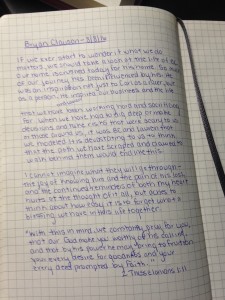
“If we ever start to wonder if what we do matters, we should take a look at the life of Bryan Clauson. Our home is crushed today for his home. So much of our journey has been influenced by his. He was an inspiration not just to Carl as a racer, but as a person. He and Lauren inspired our business and the life that we have been working hard and sacrificing for.
When we have had to dig deep to make decisions and take risks that were scary to us or those around us, it was BC and Lauren that we modeled. It is devastating to think that the path we have scraped and clawed to walk behind them on would end like this.
I cannot imagine what they will go through – the joy of knowing him and the pain of his loss, and the continued reminders of both. My heart hurts at the thought of it all, but also aches to think about how easy it is to forget what a blessing we have in this life together.
—
With this in mind, we constantly pray for you, that our God make you worthy of his calling, and that by his power he may bring to fruition your every desire for goodness and your every deed prompted by faith. (2 Thess. 1:11)”
I’m sharing this here in hopes that the first line rings home for you: “If we ever wonder if what we do matters, we should take a look at the life of Bryan Clauson.”
Many of us struggle to make this racing dream work. We’re often faced with doubts and doubters, questions and loud questioners. We get wrapped up in the hardships of losing and wrecking, paying bills and making sacrifices. We lose sleep over what we trade for the time, energy and money we give to our racing.
I’d like to remind you of this: you have no idea who you are affecting and influencing on your journey, racing or otherwise.
We weren’t just inspired by Bryan’s talent. We appreciated his humble demeanor and quiet acknowledgements when our paths crossed. We were inspired by watching what it took to plan and execute the Chasing 200 Tour and promote the Shamrock Classic. We recognized their contributions to causes important to them and our racing community.
We loved how he loved, not just Lauren and Chevy and Stewart, but everyone around him.
Whether you hang it up before you get that first win, snag a championship (or ten), run out of money before the season’s in full swing or pull off the biggest victory of your career, your choices, your work and your attitude are affecting someone. Someone sees your smiles. Someone sees the pain in your eyes, too. Someone will see the pat on the back, or the congratulations you offer. Someone will see how tired you are at the end of the night. Someone will recognize and appreciate your sacrifices.
That’s incredibly powerful, and too often we forget that.
That’s just one of the many revelations that a loss like this can reveal to us. And for that, we are blessed.
Thanks Bryan!
xo.
Kristin
Increasing the Value of Your Sponsorship Offerings
Some of the most frequent questions I get are regarding sponsorship pricing and value. Many racers, and racing properties and events, struggle with knowing how much to charge and how to justify their pricing.
That’s one of the reasons that I wrote a popular blog post on the difference between pitching racing sponsorship that’s too expensive versus a package that’s just not worth the price. You can read it here if you haven’t already or need a refresher. That’s also why I created an advanced training workshop on crafting and valuing sponsorship offerings that marketing partners will be thrilled to sign up for. You can learn more about that here.
One of the questions I was most recently asked is how to increase the value of your sponsorship offerings. That’s a great question because if you want to charge more, you better be prepared to deliver the equivalent value.

Zack Anthony Photo.
Here are a few ways that you can increase the value of your offerings:
- Increase the size of your audience.
- Increase the depth of connection to your audience.
- Reconfigure your offerings.
- Create partnerships with other properties.
Increase the size of your audience, and the depth of your connection to them.
This is the easiest way to add the most long-term value to your sponsorship offerings and your team as a whole. If you’ve been around here before, you know that sponsorship is a marketing investment. Many companies are making that investment so that they can access your audience.
If your audience is aligned with their target market – i.e. the people who like you are their potential customers – then it only makes sense that more is better. It also means that a deeper connection with your audience means that they are more likely to harness some of that connection for their brand. A highly engaged audience (one who interacts with your content online and offline) is extremely valuable to a marketing partner who wants to reach them.
That’s great news! How do you do it?
In simple terms: treat your racing as a business and your business as a brand.
If you haven’t already gone through the free Build Your Racing Brand Challenge, I’d suggest doing so. It’s 30 days of free content that covers how to deepen your connection to your audience and grow it organically, along with tons of free resources on how to improve the look and feel of your brand platforms.
Over time, when you show up consistently and professionally with content that’s meant to serve your audience, your brand will increase in value.
Reconfigure your offerings.
If you’re just providing logo placements on your car and hauler, it’s time to re-evaluate your sponsorship program.
As we’ve talked about many times here at DirtyMouth, your sponsorship offerings need to align with your marketing partners’ goals. If you want to increase the value of your offerings, you first need to align them with your current or potential marketings partners’ goals. You can then figure out ways to add value based on those.
For example: If you are currently offering social media mentions in your sponsorship package and your marketing partner’s goal is to get the word out about a specific product, provide messaging (not just mentions!) about that specific product. Talk about the benefits of that product, how it helps you in your racing career or life, and why you use and love it.
Messaging vs. mentions might seem like only a slight shift, but it can be a major value-add for your marketing partners.
Other examples? If your partner values the hospitality aspect or ability to network at the race track, create a ticket package or behind-the-scenes garage your for their VIPs. If your partner values community relations, include a donation, monetary or in-kind, to their charity of choice or an appearance at a community event in their fee, or work with your local newspaper to showcase their involvement with a certain cause.
Think outside of the box on how you can design offerings that they’re going to value more because they closely align with their goals for the partnership.
Partner with other properties.
This sounds scary because we instantly go to worst case scenario: the other property might swoop in and ‘steal’ your sponsor. Yes, that is worst case scenario, and it’s pretty unlikely if you’re doing your job.
Our team is happy to work with sponsors who also work with other properties in the sport because we offer things that they can’t, and vice versa. Most companies are working with more than one advertising medium – billboards, television, social media ads, and more – so it’s best to think about other racing properties the same way. There’s more than enough to go around.
So, how do you use this to increase the value of your offerings? As I hinted above, you may not be able to offer all of the benefits you’d like to package together for a marketing partner yourself. That’s when it’s time to bring in another property, like your local race track, for example.
It’s not hard to put together a package with your local track or series that creates a win-win-win situation for you, the track and your marketing partner. Hospitality packages are the most obvious – including race tickets, a hospitality suite, or an event sponsorship. But you can also think outside of the box for the property – like integrating the division sponsorship, a category exclusivity (think: the exclusive beverage of X speedway!), the kid’s club naming rights, exclusive content and more.
Just because you’re not the star of all of it doesn’t mean you can’t put it together in a pretty box for your marketing partner. The more touch points your marketing partner has with their target audience, the more valuable that exposure becomes. And if you can be the one that creates those opportunities for them (which also saves them a lot of time and effort), the more value you’re offering them for the same investment, if not less, than if they built the package themselves.
And there you have it – four ideas for how to increase the value of your racing sponsorship offerings. More ideas? Drop me a line at Kristin@DirtyMouthCommunications.com, share them in the comments below, or hop on over to our free Sponsorship Success Community on Facebook!
xo.
Kristin
The Power of Small Wins
Big wins. They are what we all live for, right?
Being crowned King Kristin (hmm, Roger, can we chat?) at Eldora Speedway’s Kings Royal or the Knoxville Nationals Champion might top your list. Or maybe you’re aiming higher, for a points championship in Formula One or NASCAR.
But most of us aren’t just one step away from our IndyCar points trophies. That might be where our dream started, but it’s not going to happen tomorrow, or this year, and we’re mostly okay with that.
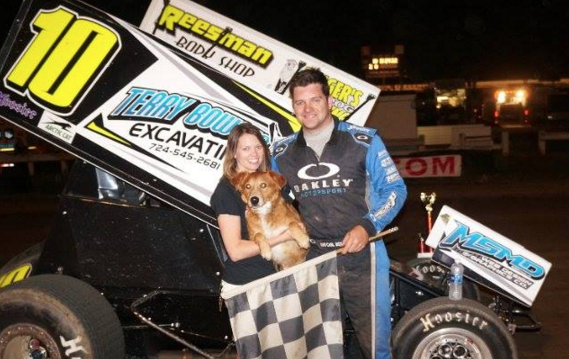
Can someone Snapchat filter a crown on me in this picture? Or the dog? I’m really not picky…
Why? As long as we don’t quit, we’re still working towards our dreams.
But what about those days – or months – when you’re losing motivation? When those big wins are too far apart? When you feel like you’re not making any progress? When you question what you’re doing altogether?
Over the past few weeks, I’ve released just shy of 20,000 words in the Build Your Racing Brand Challenge. It’s been a bigger undertaking than I imagined, mostly because I can’t stop typing everything I think will help you in your quest to build a brand.
(Didn’t join at the beginning of the month? Don’t worry – you can still start from Day 1 of the FREE challenge right on over here. There are tons of social media goodies in there, along with mindset hacks (<-just realized I don’t care for that word, thankyouverymuch) and sponsorship insights.)
It’s also the middle of summer – the busiest time of the year for us in terms of schedule because we’re racing and so are all of our clients – and I have been up to my eyeballs in work that doesn’t seem to be moving the needle. Scheduling. Booking hotels. Re-booking hotels when you finally realize how much space your hauler requires. Invoicing. Updating websites. Ordering hero cards and apparel. Counting your Starbucks rewards points. Refreshing Weather Underground.
You know, real game changers.
But when I sat down this week and started going through some of the emails and messages I’ve gotten through DirtyMouth recently, I realized that I needed a big dose of my own medicine.
See, awhile back I wrote about making waves vs. making ripples. Here’s an excerpt:
“When you first start out in racing, or in anything else for that matter, you’re a beginner. From your first job to your first time playing a video game, you generally start out at zero.
And when you work at something new, you start improving. In fact, the harder you work, the more you improve. You go from tiny steps to leaps and bounds.
It’s easy to see this with rookie racers. Most struggle to make their first laps. But after some experience, they start to improve. Once they get the car under them, they quickly shave a large chunk of time off of their laps. Then they finish their first race and begin making passes. When you get a little bit of skill and confidence, you can quickly go from last to, well, not last.
That’s making waves.
But as you get better and better, those huge improvements taper off. You might only shave two seconds off your best lap on a good night. After more experience, it’ll reduce to one. And eventually, when you’ve hit a comfortable stride, your improvement will likely plateau completely.
And that’s when it seems like the sea is calm.
That’s the tipping point for many of us. When it seems like we can’t improve any more, some just accept status quo and maintain.
But if you want to get to the next level, you have to accept that the waves of change are going to start to look like ripples.“
I wrote all that, and then I immediately forgot.
I reached that tipping point in my business the same way that racers do when they are in the thick of the in-between: I felt like I wasn’t making enough progress, and I got defeated.
But this 30 Day Build Your Racing Brand Challenge reminded me of the importance of recognizing progress and celebrating small wins.
Since we started the challenge, I’ve seen quite a few racers take major steps forward in their efforts to build a brand. They’ve grown Twitter followers, talked to new potential marketing partners, attracted new fans and increased their social media engagement. Some have started their first Facebook pages and others have improved their brand image with professional photos and graphics.
These are all small wins that I got to be a part of.
And I forgot how important that was in my quest to help you turn the racing industry around by packing the stands and selling out your sponsorship programs.
These small wins will snowball over time into bigger opportunities, because that’s what being a brand affords you if you treat that privilege with respect. They might just be the foundation for a big win.
Your emails and messages and posts inside the Sponsorship Success Community and wins helped remind me of that. So let me remind you.
When you and your team are working for something big, it’s easy to get discouraged along the path. Identify the small wins, even if they feel like a step back on paper, that you can shoot for in the meantime.
If you’re moving up to the next level after winning a lot of races (<-close to home right now), consider a goal of qualifying for races in that more competitive series. When you’re comfortable there, shoot for a consistently top-15 car. Your big win at that point might be a top-5 – not out of reach, but not easy.
Set yourself, and your team, up for success by creating small wins that actually matter. And then celebrating when you achieve them.
That’s what will move the needle and keep you motivated all at the same time.
xo.
Kristin
How to Build a Racing Website for Less than $100
As a racer, you might not think of your website as a critical piece of your program. But to me, your website is to your online brand what your hauler is to your on-track performance: it’s the hub of the action in the pits.
If it’s effective, it holds your tools, spare parts and support crew/materials in a layout that’s designed for racing. The more effective your hauler – the more it contains in a better layout – the better job it enables you to do on the track.
Your hauler doesn’t make or break your on-track performance. But without it, your job would be a heck of a lot harder.
Your website serves the same function when it comes to your ability to grow an audience and support your team financially with sponsorship marketing and merchandise sales, for example.
Yes, you can serve marketing partners without one. And yes, you can sell apparel and build a fan base without one. But it’s less effective – you’ll have to work harder for lesser results.
(Why? When fans want to purchase your apparel but can’t make it to the pits at the track where you’re selling your t-shirts that one night, they go to your website to purchase. When marketing partners do their research on the driver that just pitched them, or they found on a social media channel, they’ll go to your website to see if you’re legit and represent yourself well. When at track announcer needs bio information, when a media member needs results, and when a fan wants to find out more about you, they’ll all go to your website.)
So, let’s work smarter.
I know – from talking to the team owners, drivers, drivers’ wives, crew chiefs and parents who are in charge of marketing their race team – that websites are pretty intimidating.
- Many teams avoid them because there are tons of tutorials on how to build one and sites that promise to walk you through it if you buy their package, but there isn’t a whole lot of information out there on building one for yourself that applies to racers specifically.
- And the alternative is paying a company to build one for you – not always the easiest money to spend when you’re trying to figure out how to pay your speed shop bill. (If you have the budget and want a racing-style website that someone else builds for you, I highly recommend the guys at MyRacePass.com. They’re not paying me to say that, but do tell them I sent you. Hi Chris, Josh and co.!)
I want to take the intimidation factor out of the build it yourself option. For those of you who are willing to take the leap, it’s going to the most economical and fast way to get a quality website that serves your teams’ financial and brand-building needs.
There are three major steps to building your online hub (for less than $100):
- Purchase a hosting package (where your site will live).
- Purchase a domain name (yourname.com).
- Setup your website (sounds so simple when you make it one step!).
There are tons of tutorials out there on this, but I’ll walk you through how I’ve done it for myself and plenty of other brands.
We recently launched the all-new CarlBowser.com and it took me all of 30 minutes to do once I actually sat down and executed it. That includes ‘programming’ all of the content and launching an online merchandise store that’s already generating income for his team. (The bad part? It’s been on my list to do since 2015. #procrastination)
Yours might take a little bit longer if it’s your first time messing around with website, but not much because of the tools we’re going to be using.
If you can use a program like Microsoft Word, you’re capable of building a simple and effective website that fans and marketing partners will love in very little time. So let’s get on it.
Step #1: Purchase your hosting package.
There are so many hosting companies out there, and, to be honest, they pretty much all do the same thing most of the time. Personally, I’ve tried Bluehost, Hostmonster, and GoDaddy over the years. In my experience, Bluehost has been the most user-friendly, secure, simple and cost-effective platform with the least downtime.
You can pick whichever host you’d like, but my quick tutorial will show you what it’s like to use Bluehost because that’s now what all of my sites are using. (And, just so you know, if you purchase through my link I will receive a commission. That’s a little bit of coffee money for me in exchange for providing free content. You won’t be charged anymore because of that, but I certainly will appreciate it!)
Generally, Bluehost costs $7.99/month for new customers. At this moment, they’re running a special for $3.49/month for new customers. So that’s $42-94/year for web hosting depending on if they’re running a sale or not. Or about 1/2 of a tire. Not bad.
So, what do you do? Head over to Bluehost and click the Sign Up button. You’ll be asked to select a plan:
Choose the basic package. I know all the extra goodies look fun (or scary, like you need them), but you really don’t need anything more than basic at this point. Once you select the basic package, you’ll…
Step #2: Purchase your domain name
But guess what? Your first domain name is FREE when you use Bluehost (and some other hosting companies, FYI). No matter what host you use, you will have to purchase the rights to keep that domain name each year. It varies quite a bit, but generally runs $12-15/year.
So, once you hit ‘Select’ on the package, you’ll see this screen: 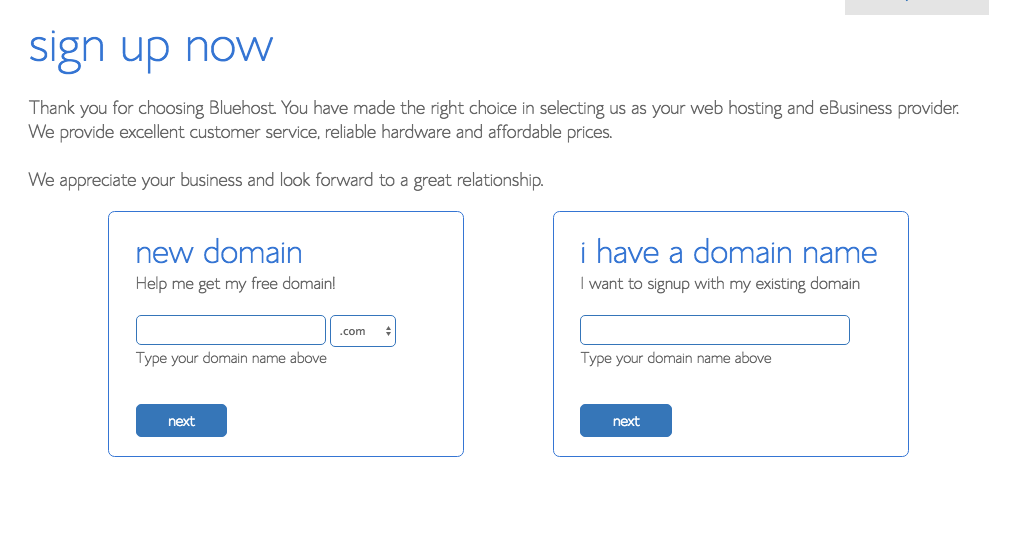
If you don’t already own your domain name, now’s the time.
By the way, I often get the question of what to pick for your website URL. Go with the driver’s name? Add racing on the end? Setup one for the team? My answer is that it depends on who you are. If you’re the team owner setting it up for your team and the driver is hired or replaceable, go with yourteamname.com. If you’re the driver or team owner and you need a website for yourself outside of racing, pick yournameracing.com or yournamemotorsports.com. Otherwise, go with yourname.com if it’s available.
Remember: shorter and simpler is easier to – ahem – remember.
(If you already have a domain name, you’ll have to move it to your new hosting package later. Bluehost has a quick and easy tutorial for how to do so in their help section.)
Then, you’ll create your account:
And choose your package details (below). I don’t recommend any of the extras. They’re unnecessary for our purposes.
You can also select a shorter package if you’d like. Then, you’ll enter your credit card information and get directed to an order confirmation page.
BOOM! That’s it for Steps #1 and #2.
Stop back later for Step #3.
What is a Racing Brand, Really?
Last week, we talked about one of the best pieces of advice I can give you: don’t wait until you’re winning to build a brand.
Smart companies partner with brands, not just fast race cars, in order to reach their audience. Fans become the audience of their favorite brands.
In short: if you want to win races, fans and partnerships, build a brand.
If you signed up for the 30 Day Build Your Racing Brand Challenge, you’re on board with the concept. If you haven’t already, you can sign up here. 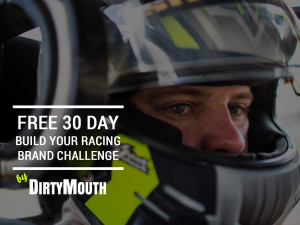
But it’s important before we dive too deep into the actionable parts of the challenge to build a strong foundation. We need to cover what being a personal brand means, and what it can do for you.
What is a Brand
Let’s not call Merriam or Webster on this one. I will give you my definition, and we’ll move forward on the pretense that I’m not completely incorrect:
A brand is a set of stories, relationships, experiences and expectations that inspire a person’s decision to choose one product over another.
You are the product. So is your competition. The relationship you have with a fan (or marketing partner, or media member) helps them decide whether to buy into your brand or not. Those relationships are built on their experience with your brand. That experience is built on a set of stories.
And this is my word of warning: even if you are not telling your story, an experience is still being formed about your brand for fans. And it is completely out of your control.
If you want to build a brand, that’s a dangerous proposition.
But why would you want to build a brand?
What Being a Brand Can Do for You
I should scratch that title out, because the pretense is a lie. You can’t choose to be a brand. You are already a brand.
It’s really a question of being a strong brand or a weak brand.
What being a strong brand can do for you:
- create a rabid fan base that will support you when they get the chance (think contests and crowdfunding campaigns),
- sell merchandise and apparel,
- attract and retain marketing partners,
- attract and retain higher profile and value marketing partnerships,
- expand your level of sponsorship offerings,
- allow you to connect with media and influencers (think publicity opportunities),
- put you in front of team owners that may have an open ride,
- create offers for tow money to travel to races,
- allow you to bring attention to a cause that’s important to you,
- and much more.
The Opportunity
There has literally never been a better time in the history of mankind to build a brand for your racing business – the internet gives us access to billions of people across the world.
We’re going to be talking over the next 30 days in the Build Your Racing Brand Challenge about how to reach and connect these billions of people to the brand that you want to have.
Because when you control your brand, I firmly believe that you control your future. You can create your own opportunities. You have a choice.
Don’t buy into the ‘but I need to win races to get fans and sponsors!’ mentality.
That’s for those who aren’t willing to put in the work it takes to build a brand. It’s for those who aren’t willing to risk doing what they want for themselves instead of making excuses.
I know that’s not you. Because you’re here.
xo.
Kristin
P.S. If you’re not already signed up for the FREE 30 Day Build Your Racing Brand Challenge, get on over there. In addition to daily content, you’ll get a deeper dive into the concepts we’re talking about today, practical how-to’s, resources to go along with it all, and my favorite tips and tricks for building a brand you love.

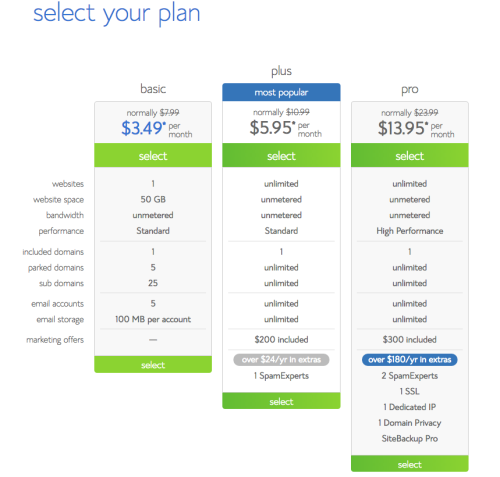
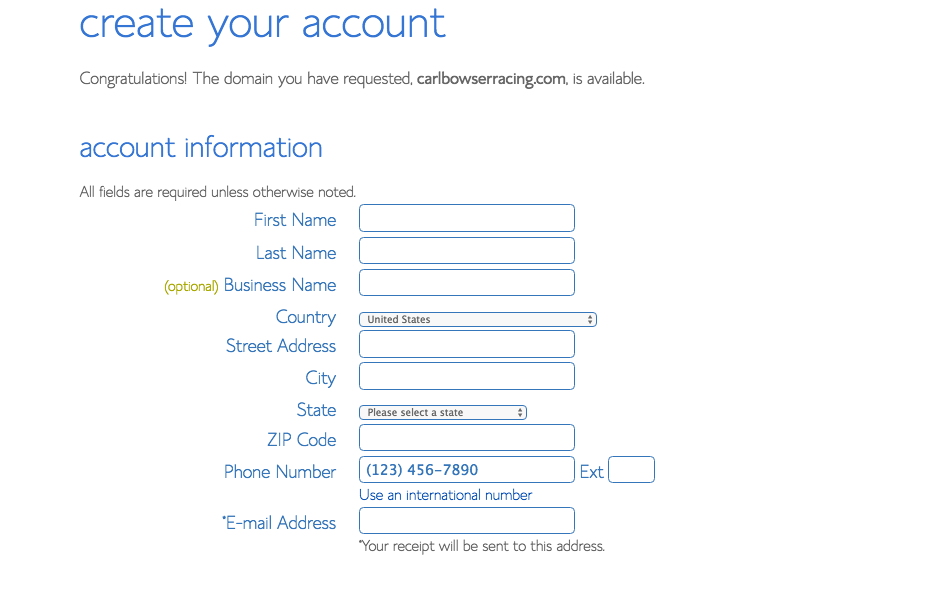
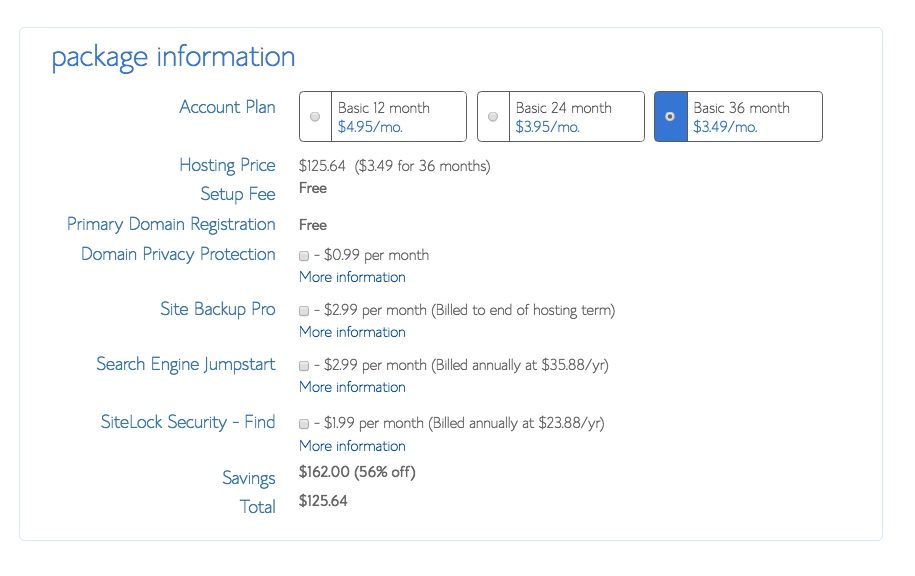
Connect!